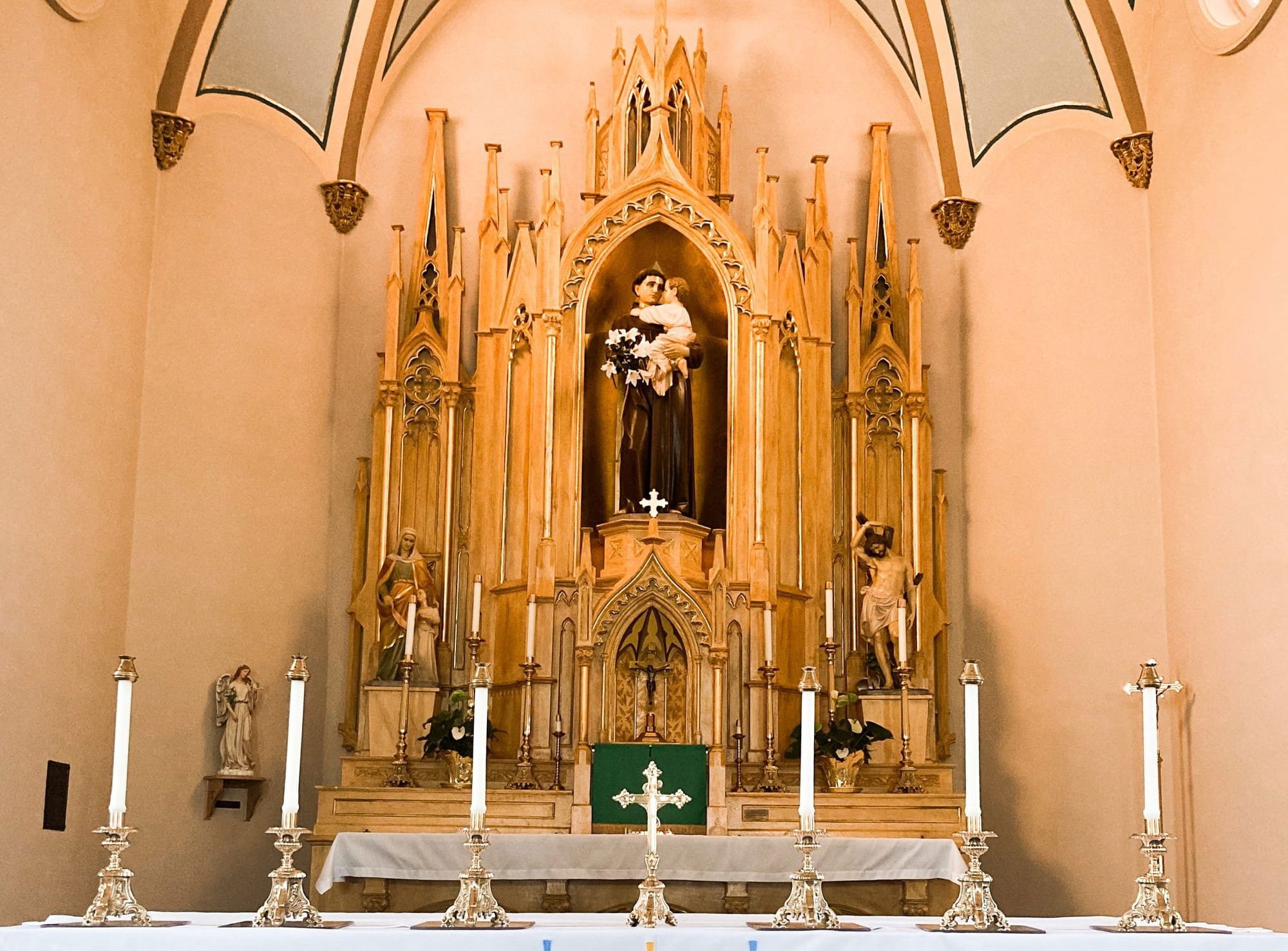Originally Called Padua

St Anthony Parish
The village of St. Anthony was settled in the 1830's by German immigrants. The center of the settlement was the intersection of the present State Route 49 and St. Anthony Rd in Washington Township, Mercer County, Ohio. Originally called Padua, it is still designated by that name on some maps. Spiritual needs of the settlers were met by the pastor of St. Joseph parish, Father Joseph Albrecht, who offered Mass in St. Anthony once a month. In 1852 permission was granted to the residents of St. Anthony to establish their own parish. With the help of Lutheran neighbors, in 1853 a log church was constructed approximately 1/4 mile north of the crossroads. Each family contributed $4.00 to help defray the cost of the church.
In 1874, the deterioration of the log church made it necessary to build a new place of worship. The present site was chosen because of its proximity to the public school located on the SE corner of the intersection. Anton DeCurtins was commissioned as architect for the new structure. The cornerstone was laid in 1874. A tin box placed inside contains coins, paper currency, copies of local newspapers, and "official" papers.
It wasn't until 1900 that the steeple, sacristies, and stained glass windows were added, followed by the installation of the pipe organ in 1903. The early 1900's saw many improvements to the church. The heating system moved from two pot-bellied stoves that burned wood to a coal burning base heater. In 1912 a basement was dug under a portion of the church to accommodate the installation of a modern heating plant. Electric lighting replaced the acetylene light plant in 1919. In 1926, the altars, pulpit, and communion rails were repainted. The statues and stations were cleaned. They were repainted in 1937.The next major renovation took place in 1946. The original side altars, statues, and communion rail were replaced. New stations of the cross were added. The elevated pulpit was removed.
With the advent of Vatican II, the sanctuary was redesigned in the 1960's. The communion rail was removed and the addition of the main altar allowed the priest and people to face each other during the celebration of the Mass. Throughout the past 25 years the century-old church has been refurbished in both the exterior and interior. Many improvements have been made in the last five years, beginning with the installation of new carpet in 1998. In 1999 the focus was on exterior repair. A new roof, tuck pointing, steeple repair, and re-gilding of the cross were included in the project. In July 2002 interior repair and redecoration was completed. The walls were fiber-glassed and painted, new lighting was installed and statues and artwork were refreshed. The original cemetery is located 1/4 mile north of St. Anthony, near the site of the first log church. A single marker lists the names of the early settlers buried there. When the present church was built, a new cemetery was established behind it. The first burial took place in the new cemetery in 1876. Over the years additional ground was acquired to allow for the cemetery's expansion.
